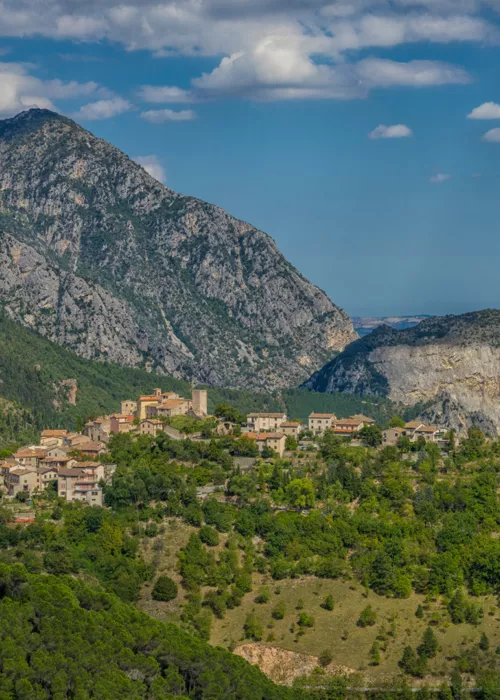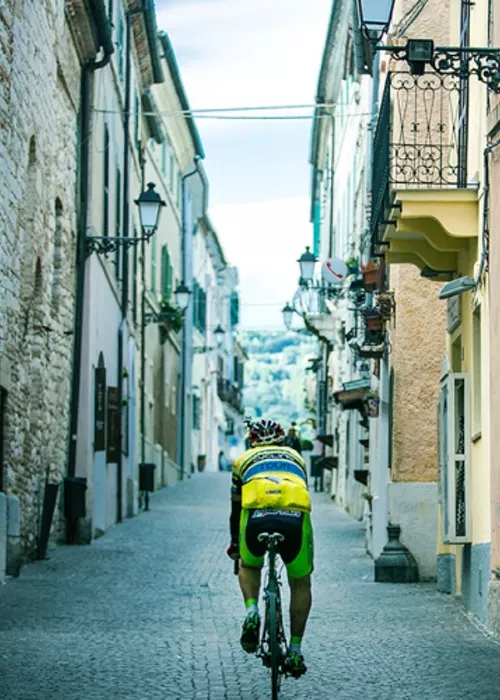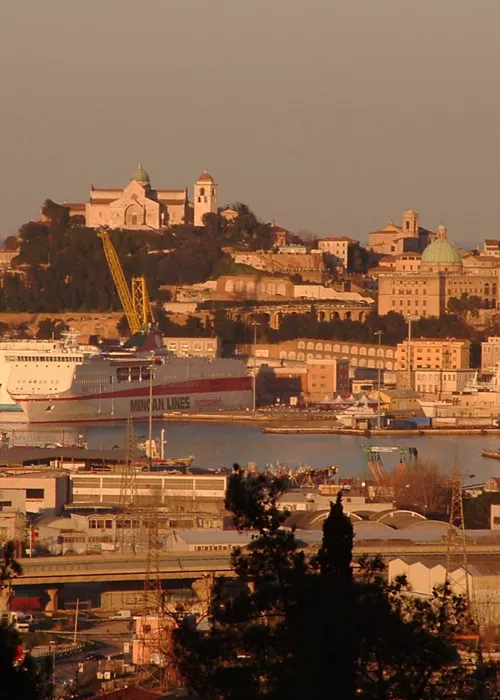Macerata and its surroundings

Strategically located since the time of the Roman Empire, Macerata is perched on a hill between the valleys of the Potenza and Chienti rivers. Places of artistic and cultural interest, first and foremost the Sferisterio, are all found here. Palazzo Cortesi is the right choice for a comfortable stay in the historic centre. It has the charm of a 16th-century residence, renovated with minimal elements together with original period parts. A few steps away, in an alleyway filled with culinary aromas, you can immerse yourself in Macerata's culinary tradition at the Da Rosa trattoria. You can enjoy typical local dishes such as vincisgrassi and rabbit in porchetta, in a well-kept, pleasantly old-style ambience. For those who prefer a vegan selection and eco-friendly philosophy, the Lord Bio is the only vegetarian, vegan and organic restaurant in the Marche region and it has its own farm that supplies its products. The pasta is handmade, as are the ketchup and mayonnaise in the vegan burger, and you can also order pizzas and cakes made with stone-ground organic flours.
In search of well-being and unspoilt landscapes, a few kilometres from the centre of Macerata is Villa Quiete , surrounded by a centuries-old park, with a swimming pool and spa, where you can relax or jog and exercise on equipment spread around the estate. The restaurant offers a fine-dining menu with an emphasis on genuine products. Immersed among the vineyards above Castelraimondo, at an altitude of 450 metres, is the Collestefano winery, which bottles an organic Verdicchio di Matelica DOC which is excellent value for money. In this portion of the Marche hills, the good temperature range and the clay and limestone soil produce excellent grapes. In Passo San Ginesio, a recommended stop is Da Isolina for its legendary pappardelle with hare sauce and lamb scottadito. For one of the best ciauscoli, stop at King Norcino where you can also find porchetta, salamelle and lardo picato.
From the Macereto Plateau to the Adriatic

Heading towards the Sibillini Mountain Park, at about a thousand metres above sea level, on the Macereto plateau, the young founders of Azienda Agricola Scolastici produce short chain organic cheeses exclusively with their own milk, from which they make excellent ricottas and pecorinos matured in caves. To taste brodetto alla civitanovese - the traditional fish soup of the Adriatic - you have to travel to the coast. To Da Enzo, in Civitanova Marche, for example, an institution where a wide variety of fish is simmered in tomato sauce with chopped parsley, marjoram and plenty of garlic. To taste one of Marche's best cresce sfogliate (flaky flatbreads), we stay in Civitanova, at the B.A.C. Cresceria which uses organic raw materials for the dough and filling, such as flours from ancient grains, herbs, cheeses and cured meats. Following the coastline, the seafront in Porto San Giorgio is the new location of L’Arcade, one of the restaurants in the Marche region that has won the highest accolades from guides and critics. In finely designed spaces, with large windows overlooking the sea, chef Nikita Sergeev has put together a menu of broad creativity and incisive flavours. Such as fusilli with mead, cinnamon and Asiago Stravecchio cheese; or skate in pil pil, Lapsang black tea and aromatic salad. Less than a kilometre away, on the site of a former fruit and vegetable market, Banco_12 is an informal bistro with an urban chic ambience, owned by L'Arcade. It serves everything from breakfast (with homemade pastries) to take-away delicatessen dishes, cocktails and dinner
Fermo, Firmum la Romana

From Belvedere Park next to Fermo Cathedral, the panorama sweeps from the Adriatic to the Sibillini Mountains. The various memorable sights to visit include the Underground Roman Cisterns- the second largest in the world - where rainwater and spring water were once collected for distribution to the citizens. A few minutes away, Emilio has been a meeting point for many artists for years. Here you can enjoy a slightly reworked seafood cuisine; the red beet ravioli stuffed with scallops is noteworthy. In the centre of Fermo, Palazzo Romani Adami is a B&B housed in an 18th-century residence, with frescoed ceilings and Art Nouveau furnishings. Some suites overlook the building's ancient courtyards. Next to the sinuous arcades of Piazza del Popolo, the Agorà - Olive Ascolane fried food shop, with a workshop in Ascoli Piceno, serves excellent ascolane olives from the company's olive grove. The other ingredients and packaging materials come entirely from local producers. In the foothills of Fermo, , CasAnnona is a finely restored farmhouse in an ideal location, with a swimming pool and a cool pergola to relax in. Guests stroll through a bucolic atmosphere in the company of friendly donkeys that are always a great attraction for children. Before reaching Ascoli Piceno, it is worth making a detour to Il Tiglio in Isola San Biagio, where chef Enrico Mazzaroni produces imaginative and original cuisine, the result of great research and experimentation, in dishes such as artichoke buttons, sweetbreads and beurre blanc or venison, ragout, agretti and caviar.
Ascoli Piceno

Known as 'the city of a hundred towers', Ascoli Piceno preserves several artefacts from medieval and Renaissance times. To fully enjoy the historic centre, you can stay at the Di Sabatino Resort which has a pleasant wellness area with sauna and whirlpool baths and offers treatments and massages. Adjacent to Piazza del Popolo, the Caffè Meletti is an old café, ice cream parlour and restaurant, founded in 1907 and furnished with original Art Nouveau elements. Popular for its 'anisette con la mosca' - which features a coffee bean dipped in liqueur - it now offers a fine pastries for breakfast and special occasions, with waffles baked on sight. To stock up on tasty ascolane olives and more, at La Bottega di Bruno there are cremini mushrooms flavoured with anisette Meletti and pistachio and burrata ravioli. In the shabby chic surroundings of an old palace, ristorante Il Desco offers well-prepared recipes: the breads, pastas and desserts are home-made and the wine cellar offers an interesting selection of labels. For truffle lovers, and a visit the characteristic medieval village of Offida at the end of the itinerary, the Osteria Ophis has dishes of regional cuisine that starts from its most popular version and is then elegantly reinterpreted in a fine dining version by chef Daniele Citeroni Maurizi.









